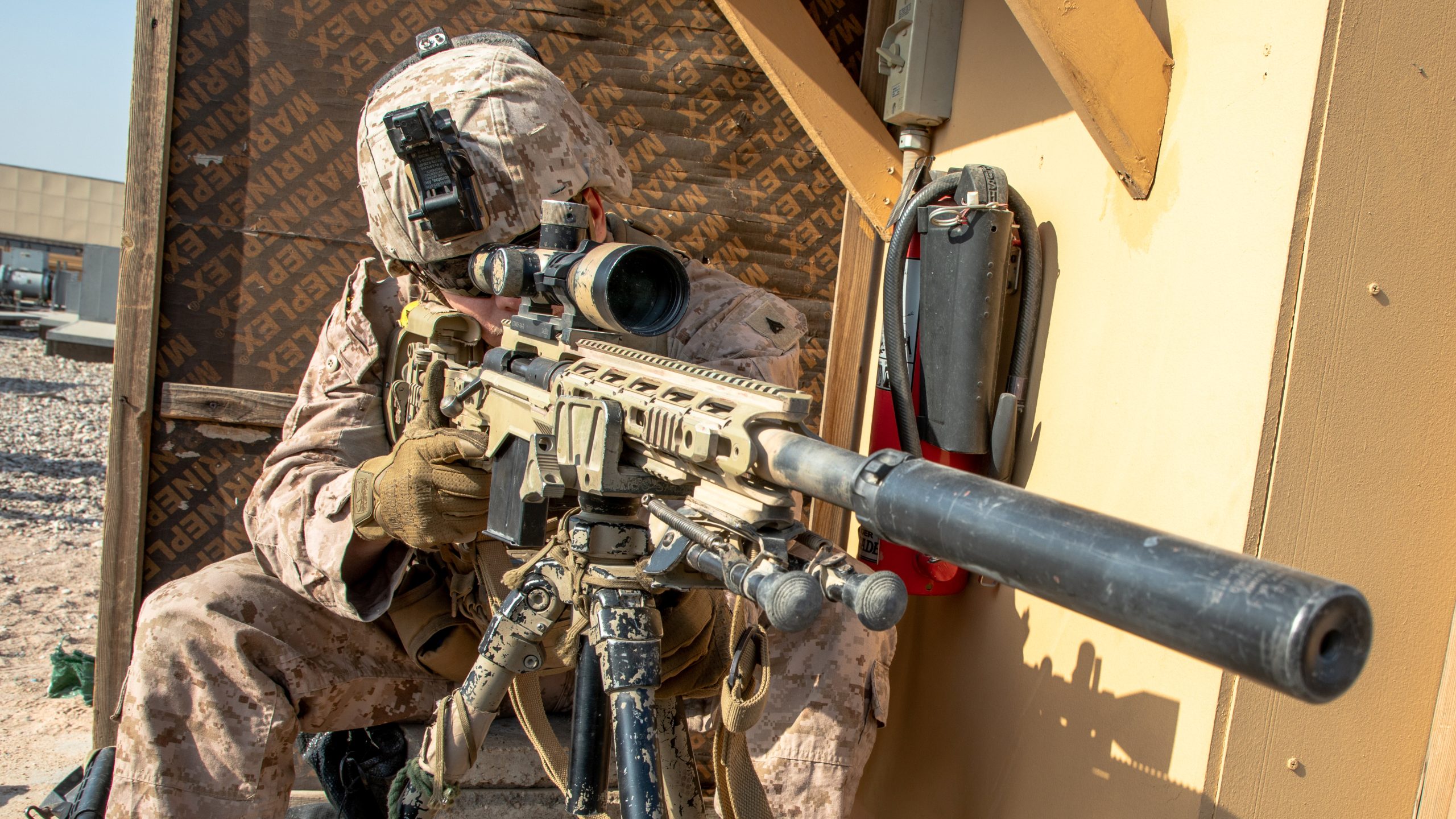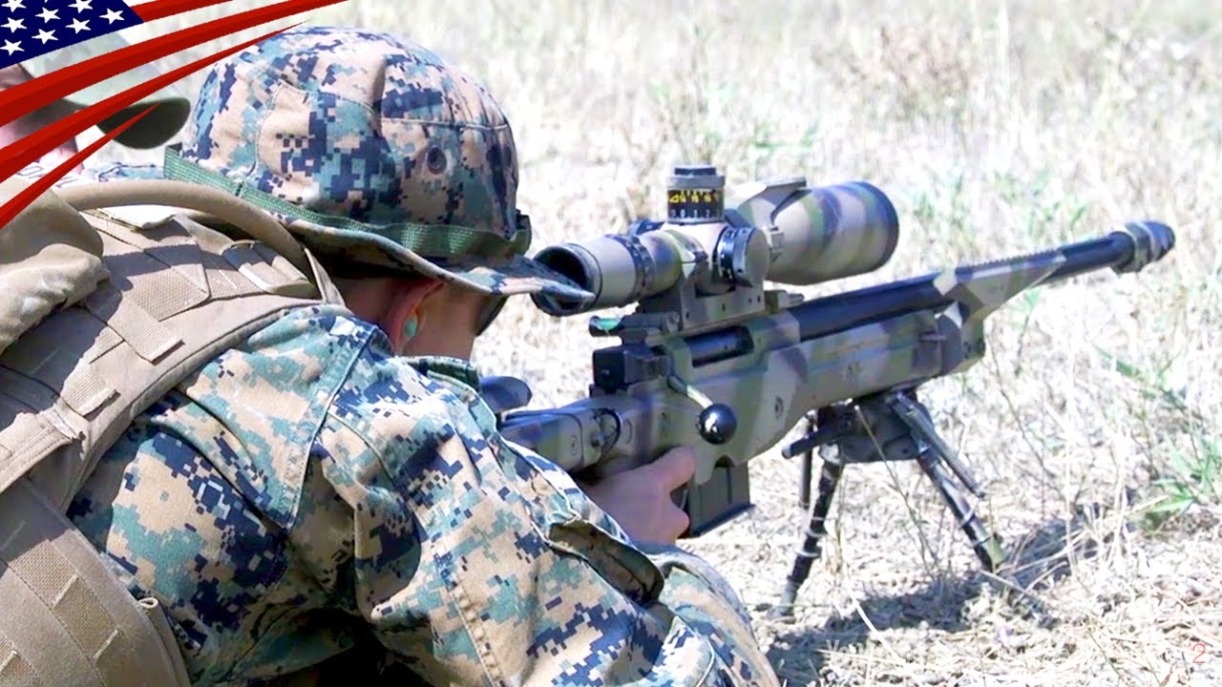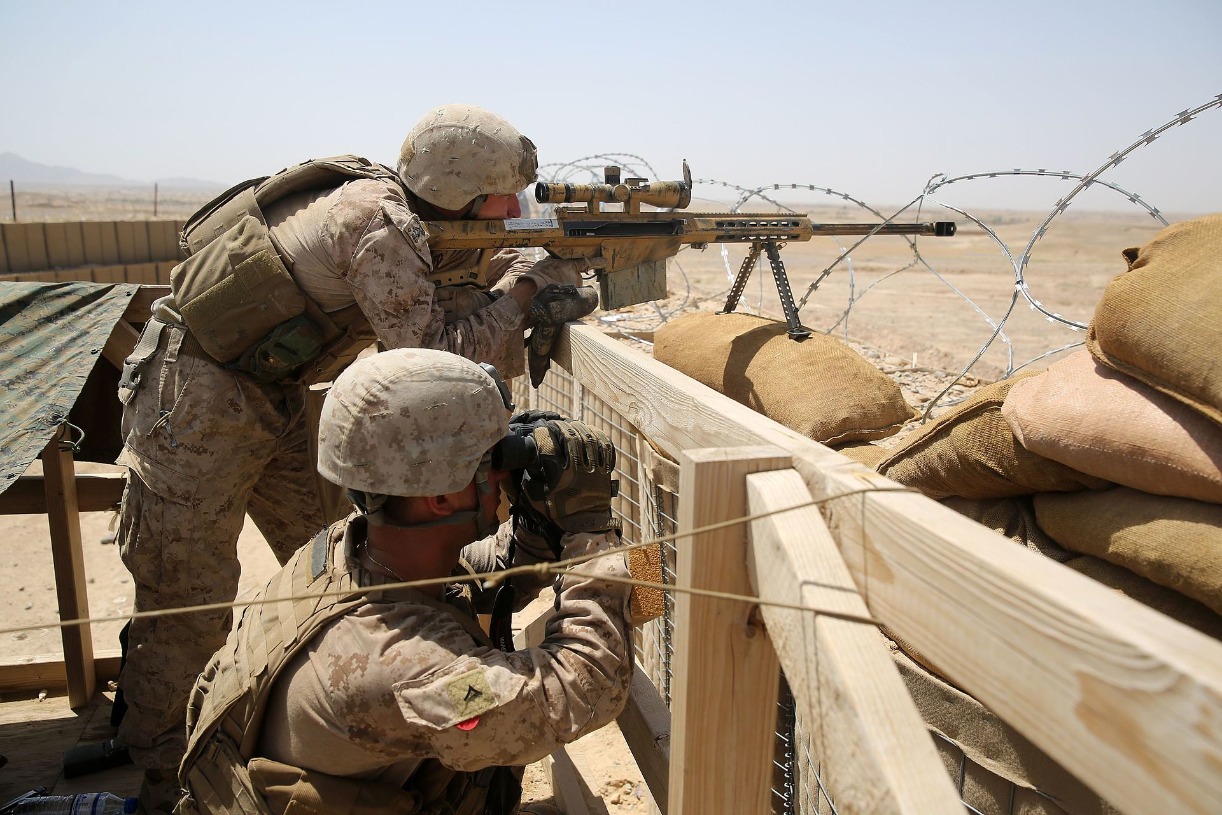Sniper rifles have evolved from simple hunting tools into some of the most advanced precision instruments on the battlefield. In modern military operations, where long-range accuracy can change the course of engagements, sniper systems play a critical role in both urban and open-terrain combat. The US Army’s sniper rifle arsenal reflects decades of innovation in range, adaptability, and tactical performance.

Top 3 U.S. Army Sniper Rifles of All Time – The Key Points and Summary
- Three Primary Army Sniper Systems – The M24 (bolt-action), Barrett Mk-22 (multi-role), and M110 (semi-automatic) form the backbone of Army sniper operations, each offering distinct mission advantages.
- M24’s Proven Track Record – Based on the Remington Model 700 and in service since 1988, this rifle uses 7.62x51mm NATO rounds, features a 24-inch barrel, and delivers reliable 800-meter accuracy, with a confirmed 1,249-meter kill by SSG Jim Gilliland.
- Mk-22’s Mission Adaptability – Barrett’s Multi-Role Adaptive Design rifle supports .762 NATO, .300 Norma Magnum, and .338 Norma Magnum rounds with interchangeable barrels and bolts. With a folding stock and suppressor, it exceeds a 1,000-meter range in a modular system.
- M110’s Urban Specialization – Designed for rapid follow-up shots and ease of training, the M110 uses .308 NATO and 6.5mm Creedmoor rounds. Semi-automatic with a 20-inch barrel, suppressor, and rail-mounted optics, it’s ideal for tight urban environments and ranges up to 1,000 meters.
- Complementary Design Philosophy – The M24 excels in raw precision and battlefield reliability; the Mk-22 offers unmatched modularity and mission flexibility; and the M110 provides speed, familiarity, and adaptable deployment, making them collectively indispensable.
How Are the Best Sniper Rifles Determined?
Military experts and firearms specialists assess sniper rifles using rigorous criteria that reflect both technical performance and battlefield utility. These include:
- Accuracy at Various Distances – Precision in shot placement over short and long ranges.
- Shot Grouping Consistency – Ability to maintain tight clusters of hits under repeated fire.
- Effective Range Capabilities – Maximum range at which the rifle remains lethal and reliable.
- Reliability in Harsh Environments – Functionality in extreme temperatures, dust, moisture, and rugged terrain.
- Modularity and Adaptability – Ease of switching calibers, optics, and configurations based on mission needs.
- Field Performance and Combat History – Real-world use by soldiers, including kill ratios, durability, and feedback from sniper teams.
- Training and Familiarity – How easily and effectively operators can train on and deploy the rifle.
Top 3 US Army Sniper Rifles: M24, Mk-22, and M110 in Focus
While the stand-off fight against near-peer competitors will involve over-the-horizon capabilities with missiles, the individual American sniper is also a powerful asset in ground warfare stand-off combat.
But which Army sniper rifle is best?
The U.S. Army has three sniper rifles they favor and wouldn’t leave behind: the M24, the Mk-22, and the M110.
M24 Has a Colorful History
The M24, based on the civilian Remington Model 700, has been a staple of Army sniper units since 1988. Rugged and dependable, it embodies the traditional sniper ethos: precision, patience, and power.
- Caliber and Ammunition Type: Fires the 7.62x51mm NATO round, known for stability and accuracy.
- Effective Range Specifications: Rated for 800 meters, but capable of extreme accuracy beyond 1,200 meters as proven in combat.
- Weight and Portability Factors: It weighs approximately 15 pounds loaded, heavier than newer platforms but extremely stable when prone.
- Barrel Length and Twist: A 24-inch free-floating barrel enhances heat resistance and maintains consistent velocity.
- Stock Design and Materials: Features a synthetic stock with adjustable length of pull, built for durability and balance.
- Optics Mounting System Compatibility: Typically fitted with Leupold Mark IV 10x fixed-power scope; supports MIL-STD-1913 (Picatinny) rail mounting.
- Rate of Fire Capability: Bolt-action, five-round internal magazine; not rapid-fire, but prized for accuracy and mechanical reliability.
This rifle helped define the modern American sniper, with its performance validated by historic kills like Staff Sgt. Jim Gilliland’s 1,249-meter shot in Iraq: one of the longest confirmed by a U.S. Army sniper.

Barrett Mk-22 Is the Most Versatile for Multi-Mission Success
The Barrett Mk-22, also known as the MRAD (Multi-Role Adaptive Design), represents the cutting edge of sniper rifle technology. Built with modularity in mind, this rifle is engineered for mission adaptability, making it the Army’s newest and most flexible precision system.
- Caliber and Ammunition Type: Interchangeable barrels and bolts allow use of 7.62x51mm NATO, .300 Norma Magnum, and .338 Norma Magnum—covering everything from mid-range urban targets to extreme long-range operations.
- Effective Range Specifications: Over 1,000 meters, depending on caliber, with the .338 NM capable of precision shots beyond 1,500 meters.
- Weight and Portability Factors: Lighter than the M24 when similarly equipped; features fluted barrels and a folding stock for easier carry in airborne or special ops missions.
- Barrel Length and Twist: Modular barrels optimized for each caliber; twist rates matched for long-range stabilization and reduced muzzle rise.
- Stock Design and Materials: Fully adjustable folding stock with length of pull and cheek rest customization; ideal for shooters of different sizes or gear setups.
- Optics Mounting System Compatibility: Full-length MIL-STD-1913 Picatinny top rail accommodates advanced optics, night vision, and thermal attachments.
- Rate of Fire Capability: Bolt-action with fast cycling; not semi-automatic, but built for precision and quiet operation with a large suppressor.
The Mk-22 is especially well-suited for special operations forces, where flexibility, range, and stealth are non-negotiable. Its ability to adapt to different calibers and combat environments makes it a go-to weapon for the future.

M110 Has Semi-Automatic Speed
Designed for rapid deployment and urban warfare, the M110 fills a critical niche in the Army’s sniper doctrine. Based on the AR-10 platform, this semi-automatic rifle balances firepower, mobility, and ease of use, making it ideal for designated marksmen and snipers operating in fast-moving environments.
- Caliber and Ammunition Type: Fires 7.62x51mm NATO (.308 Winchester) and optionally 6.5mm Creedmoor for enhanced range and accuracy.
- Effective Range Specifications: 800 meters standard, with reported performance up to 1,000 meters depending on configuration and environment.
- Weight and Portability Factors: It weighs 17.3 pounds with the suppressor, heavier than the Mk-22 but manageable due to its compact profile and balanced ergonomics.
- Barrel Length and Twist: A 20-inch barrel provides a balance between compact size and long-range accuracy; optimized for urban engagements.
- Stock Design and Materials: Fixed or adjustable stock configurations; standard collapsible options available for mission flexibility.
- Optics Mounting System Compatibility: Outfitted with variable-power Leupold Mk4 3.5-10x40mm scope; compatible with Picatinny rail optics and optional night vision.
- Rate of Fire Capability: Semi-automatic operation allows for quick follow-up shots, giving it an edge in dynamic environments or during target-rich scenarios.
The M110’s intuitive design and operational familiarity (similar to M16/M4 platforms) make it especially valuable for units integrating designated marksmen or training new snipers. Its balance of fire rate and accuracy fills the gap between traditional bolt-actions and full-auto infantry weapons.
Best US Army Sniper Rifles — Ultimate Comparison
The following comparison highlights how the M24, Mk-22, and M110 each excel in different areas, depending on the mission type, operating environment, and sniper preference. While all three are exceptional tools, this table illustrates their key differences better to understand their roles in U.S. Army sniper operations.
| Feature | M24 | Barrett Mk-22 | M110 |
| Combat Effectiveness | Proven track record since 1988 | Cutting-edge modular design | Widely used in urban and mid-range combat |
| Accuracy and Precision | High precision with bolt-action | Superior at long range (1,500+ meters) | Effective for quick, accurate follow-ups |
| Range | 800 meters (up to 1,249-meter record) | 1,000+ meters, depending on caliber | 800–1,000 meters |
| Reliability in Harsh Conditions | Extremely reliable bolt system | Durable, built for multi-environment use | Reliable in varied terrain, moderate upkeep |
| Ease of Maintenance | Simple design, easy to service | Requires more training due to complexity | Familiar to troops, easier integration |
| Weight and Portability | ~15 lbs loaded | Lighter with folding stock and fluted barrel | 17.3 lbs with suppressor |
| Cost-to-Performance Ratio | Affordable, high-value legacy system | Expensive but highly versatile | Cost-effective for designated marksman roles |
| Versatility | Best suited for long-range field use | Multi-mission adaptable | Excellent for urban and mixed terrain |
Each of these sniper rifles plays a critical role in complementing U.S. Army operations, offering a range of capabilities from pinpoint long-range kills to versatile urban engagement. Choosing “the best” depends heavily on mission requirements and operator preference.
Final Thoughts
The evolution of U.S. Army sniper rifles from the dependable M24 to the advanced Barrett Mk-22 reflects the military’s ongoing pursuit of precision, adaptability, and firepower. Each rifle marks a distinct chapter in tactical doctrine: the M24 represents reliability and proven performance, the M110 delivers speed and familiarity in urban environments, and the Mk-22 introduces modular innovation for future missions. Together, they showcase how precision marksmanship continues to adapt to modern warfare’s dynamic demands.
By fielding sniper rifles that excel across different terrains and mission types, the U.S. Army ensures its snipers maintain an edge, whether engaging targets at extreme distances, adapting to specialized roles, or operating in rapidly shifting combat zones.
FAQs
What makes these three sniper rifles the best ever used?
They each offer mission-specific advantages: the M24 for long-standing reliability, the Mk-22 for versatility and modern design, and the M110 for rapid fire in urban combat. All have been rigorously tested in real-world scenarios.
Which US Army sniper rifle has the longest effective range?
The Barrett Mk-22, with its ability to chamber .338 Norma Magnum, exceeds 1,000 meters and can be effective at ranges beyond 1,500 meters, depending on the loadout and conditions.
How do these rifles compare to modern sniper systems?
While newer rifles exist, these three remain benchmarks in their categories. The Mk-22, in particular, represents the Army’s shift toward modular, adaptable platforms common in the latest military sniper systems.
What ammunition do the top Army sniper rifles fire?
- M24: 7.62x51mm NATO
- Mk-22: 7.62x51mm NATO, .300 Norma Magnum, .338 Norma Magnum
- M110: 7.62x51mm NATO and 6.5mm Creedmoor
Which rifle is most accurate for long-distance precision shooting?
The M24 holds a strong record for long-range accuracy, but the Mk-22 is now the most capable system for extreme distances due to its high-caliber compatibility and advanced optics support.
This article was updated and adapted from original reporting by Brent M. Eastwood.
All images are Creative Commons.


















